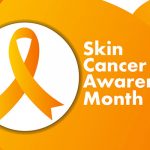The fresh, hydrated glow of smooth cheeks can be yours with a new aesthetic treatment, Skinvive injections.
Over time, skin can become dull due to dead skin cells, dehydration, hormonal changes, poor diet or aging. Columbia Skin Clinic’s hottest new treatment banishes dull skin and reduces the appearance of fine lines and wrinkles. By increasing the skin’s hydration, Skinvive™ by JUVÉDERM® adds a fresh glow and improves the smoothness of the cheek.
Though it is an injectable, Skinvive aesthetic treatment enhances your cheeks’ appearance without changing their natural look. Studies report patients are highly satisfied with how glowing, hydrated, refreshed and healthy their skin looks after treatment.
With its quick 15-minute application and minimal downtime, you can book a Skinvive treatment over your lunch break. Learn more about Skinvive injections, how they benefit your skin and what a treatment is like.
What is Skinvive?
Skinvive is a smooth, clear, colorless gel made of modified hyaluronic acid and a small amount of lidocaine. It helps the skin retain moisture and elasticity resulting in softer, smoother skin on the cheeks and fewer fine lines.
During a Skinvive treatment, a certified skin doctor uses a small needle to inject tiny drops of hyaluronic acid into the skin.
The microdroplets spread into an even layer and work within the skin. The hyaluronic acid temporarily attracts moisture, stimulates collagen production and improves the appearance and texture of the skin. This leads to a natural-looking glow and softer, more supple cheek skin.
Hyaluronic acid naturally occurs in the skin. The amount of hyaluronic acid decreases as we age and have more sun exposure. With less hyaluronic acid, our skin becomes duller, rougher and wrinklier.
Many moisturizers and serums include hyaluronic acid to rejuvenate and rehydrate the skin. However, the results of topical products take time to achieve and quickly fade once product usage stops.
A Skinvive injection inserts a small amount of the long-lasting hyaluronic acid filler into the upper layer of the skin. This replenishes and restores smooth, radiate skin from within for up to six months. It works in addition to personal skin care routines that protect the skin.
The drug includes a small amount of lidocaine as a numbing agent. Lidocaine is a common drug used to decrease sensitivity for minor procedures. Dentists and other medical professionals frequently use lidocaine as an analgesic.
While it is categorized as a dermal filler, Skinvive temporarily boosts the quality of the skin rather than adding volume or changing face shape. Its benefits are more subtle than a volumizing filler and typically last up to six months.
Skinvive is approved for all skin types and tones. Both women and men over age 21 can request the treatment to improve dull, rough or dry skin on the cheeks.
What makes Skinvive injections different?
Skinvive is the first and only hyaluronic acid microdroplet injectable that improves cheek skin smoothness. It helps your skin retain moisture and softness by temporarily boosting internal hydration, resulting in a healthy glow.
The FDA approved Skinvive for use in the United States in May 2023. However, it has been available in Europe and other countries for some time.
Skinvive is similar to other dermal filler injectables in its natural absorption into the body over time. However, it offers advantages. Other fillers add volume and reshape the face, but Skinvive is the first hyaluronic acid microdroplet injectable to change the quality of the skin.
Patients must repeat the Skinvive treatment, as with other fillers, to maintain the desired effect. The treatment results last about six months.
Benefits of Skinvive
Skinvive results from clinical studies are positive. More than half of the participants reported long-lasting, superior improvement in the smoothness of their cheeks. Even more said the appearance of fine lines on their cheeks had improved.
Throughout the study, Skinvive patients were more satisfied with their skin. More than three-quarters of participants were pleased with their skin’s radiance and hydration following treatment. They spoke highly about how refreshed their facial skin looked a month after receiving Skinvive injections.
What is a Skinvive treatment like?
After discussing your goals and treatment plan with your dermatologist, you will set up an appointment for treatment. The treatment only takes about 15 minutes. Most people resume their normal activities right away.
During your treatment, a board-certified dermatologist will give you an initial injection and then pause to let the lidocaine take effect. The doctor will then inject small amounts of Skinvive into the treatment area on your cheeks.
Following the injections, your doctor may give you ice to decrease swelling. Although the injections may cause some pain, most people reported only minor discomfort.
Nearly three-quarters of participants had a touch-up treatment after a month to achieve their desired results.
Skinvive injections usually last six months, but individual results may vary. It may also take a few weeks to see the full results of your treatment.
Possible side effects
Skinvive’s side effects tend to be mild and are usually temporary. However, serious permanent side effects are possible.
Similar to other cosmetic injectables, patients may experience redness, tenderness or swelling at the injection site after the treatment. To reduce pain and swelling, apply ice to the area twice a day for a few minutes.
Receiving your Skinvive treatment from a board-certified dermatologist reduces the risk of serious or permanent side effects.
Make an appointment to discuss Skinvive injections with your dermatologist
Columbia Skin Clinic wants to help you look and feel your best. We offer our clients the latest, high-quality cosmetic and aesthetic skin care services for anti-aging and skin rejuvenation.
We would be happy to discuss how you could benefit from Skinvive. Contact us today.






